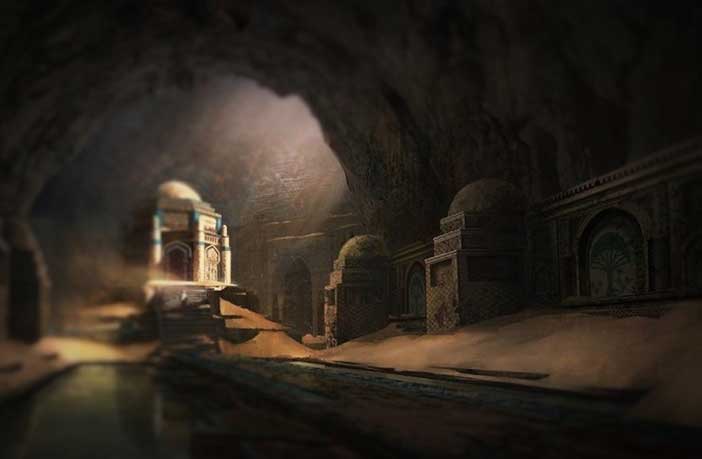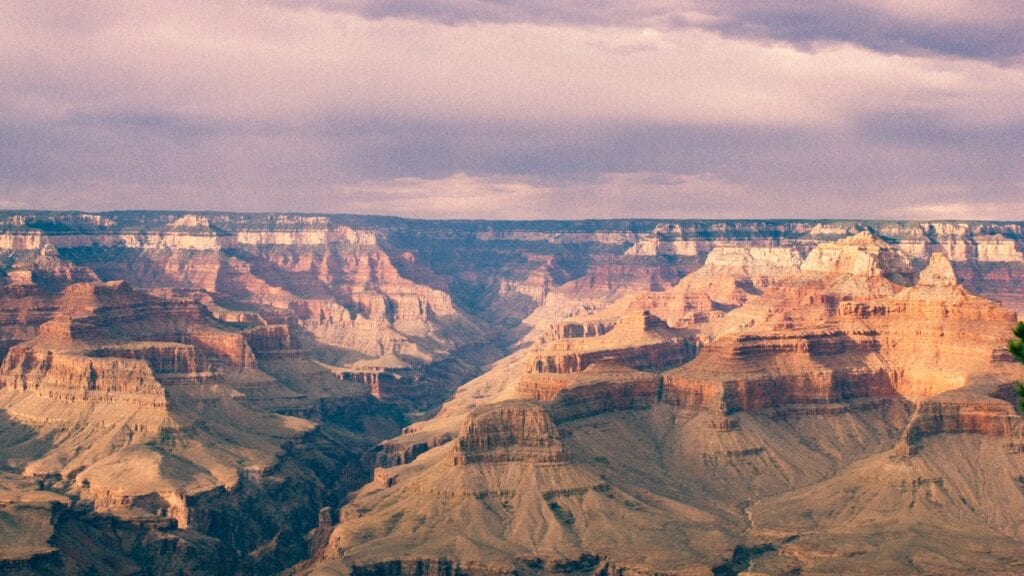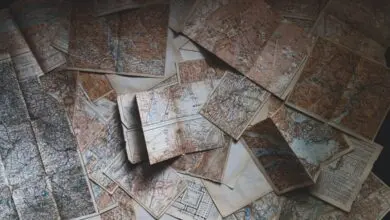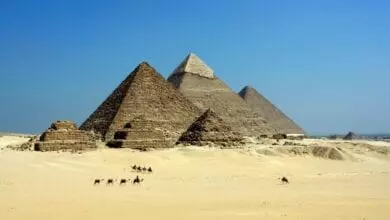The Mysterious Lost Underground Civilization of the Grand Canyon

Lying within the U.S. state of Arizona is one of the most majestic natural wonders of our planet, the Grand Canyon. Carved over hundreds of millions of years by the Colorado River and measuring 277 miles (446 km) long, up to 18 miles (29 km) wide, the Grand Canyon is a major natural phenomenon, but it is also a place of deep historical mysteries and oddities as well. One of the most unusual of these is the claim that somewhere under the earth here once ruled an advanced civilization with unknown origins and who have become lost to history, which supposedly inhabited a complex cave and cavern system that they left behind to sow bafflement and speculation with their passing. It is a very curious, far-out case that, if real, could shake our historical perceptions to the core.
The whole bizarre tale began with a curious article that appeared right on the front page of the April 5, 1909 edition of the Arizona Gazette, which gave a spectacular account from two alleged Smithsonian-funded archaeologists, a Prof. S. A. Jordan and G.E. Kinkaid, who claimed to have found deep within the bowels of the earth in the Marble Canyon region of the Grand Canyon a vast cavern system with evidence of some ancient lost civilization.

The two men were reportedly funded by Smithsonian’s Department of Anthropology, and claimed that they had found the entrance to the mysterious cavern system lying around 1,500 feet down the wall of a sheer cliff in a remote, undisclosed area. The area was described as being nearly inaccessible and surrounded by desolate, forbidding wilderness, and the more vocal Kincaid would say in his account of the discovery of the entrance and further study of it thus:
First, I would impress that the cavern is nearly inaccessible. The entrance is 1,486 feet down the sheer canyon wall. It is located on government land and no visitor will be allowed there under penalty of trespass. The scientists wish to work unmolested, without fear of archaeological discoveries being disturbed by curio or relic hunters. A trip there would be fruitless, and the visitor would be sent on his way. The story of how I found the cavern has been related, but in a paragraph: I was journeying down the Colorado river in a boat, alone, looking for mineral. Some forty-two miles up the river from the El Tovar Crystal canyon, I saw on the east wall, stains in the sedimentary formation about 2,000 feet above the river bed. There was no trail to this point, but I finally reached it with great difficulty. Above a shelf which hid it from view from the river, was the mouth of the cave. There are steps leading from this entrance some thirty yards to what was, at the time the cavern was inhabited, the level of the river.
Upon making the treacherous trek down to the entrance there was apparently found a whole intricate system of tunnels, caverns and caves that allegedly meandered off into the darkness, and it was noted that much of it seemed to have been laboriously chiseled and hewn by hand right into the stone. Upon investigation the system was said to plunge to around a mile under the earth, with vast chambers that radiated out into new tunnels and which opened up into hundreds of rooms with oval doorways. Kincaid said of these passages and rooms:
The main passageway is about 12 feet wide, narrowing to nine feet toward the farther end. About 57 feet from the entrance, the first side-passages branch off to the right and left, along which, on both sides, are a number of rooms about the size of ordinary living rooms of today, though some are 30 by 40 feet square. These are entered by oval-shaped doors and are ventilated by round air spaces through the walls into the passages. The walls are about three feet six inches in thickness. The passages are chiselled or hewn as straight as could be laid out by an engineer. The ceilings of many of the rooms converge to a center. The side-passages near the entrance run at a sharp angle from the main hall, but toward the rear they gradually reach a right angle in direction.
Even stranger than all of this were some of the things apparently found within this system of tunnels and caverns, which included numerous relics and artifacts such as weapons, various copper instruments, idols, urns, vases, all of which was taken as evidence of some ancient, previously unknown civilization apparently from the Orient. At one point they purportedly came across what appeared to be a grand shrine absolutely brimming with such artifacts, none of which were from that region or the known people’s inhabiting it. This shrine was described in Kincaid’s report thus:
Over a hundred feet from the entrance is the cross-hall, several hundred feet long, in which are found the idol, or image, of the people’s god, sitting cross-legged, with a lotus flower or lily in each hand. The cast of the face is oriental, and the carving this cavern. The idol almost resembles Buddha, though the scientists are not certain as to what religious worship it represents. Taking into consideration everything found thus far, it is possible that this worship most resembles the ancient people of Tibet.
Surrounding this idol are smaller images, some very beautiful in form; others crooked-necked and distorted shapes, symbolical, probably, of good and evil. There are two large cactus with protruding arms, one on each side of the dais on which the god squats. All this is carved out of hard rock resembling marble. In the opposite corner of this cross-hall were found tools of all descriptions, made of copper. These people undoubtedly knew the lost art of hardening this metal, which has been sought by chemicals for centuries without result. On a bench running around the workroom was some charcoal and other material probably used in the process. There is also slag and stuff similar to matte, showing that these ancients smelted ores, but so far no trace of where or how this was done has been discovered, nor the origin of the ore.
Other rooms found were full of other bizarre items and there were even discovered granaries full of seeds. The report dramatically goes on:
Among the other finds are vases or urns and cups of copper and gold, made very artistic in design. The pottery work includes enameled ware and glazed vessels. Another passageway leads to granaries such as are found in the oriental temples. They contain seeds of various kinds. One very large storehouse has not yet been entered, as it is twelve feet high and can be reached only from above. Two copper hooks extend on the edge, which indicates that some sort of ladder was attached. These granaries are rounded, as the materials of which they are constructed, I think, is a very hard cement. A gray metal is also found in this cavern, which puzzles the scientists, for its identity has not been established. It resembles platinum. Strewn promiscuously over the floor everywhere are what people call “cats eyes”, a yellow stone of no great value. Each one is engraved with the head of the Malay type.
More bizarre discoveries were still to be made down within these dank tunnels, caves, and rooms as well. In many places were found mysterious hieroglyphics etched into the stone, on urns, and carved into stone tablets, although it was unknown what purpose they served or what they said. Perhaps the most fascinating and also macabre discovery made down there in the gloom was what can only be described as some sort of crypt, where there were allegedly found rows and rows of actual mummies stuffed into shelves carved into sheer stone walls. Kincaid explained the unsettling crypt in great detail, saying:
The tomb or crypt in which the mummies were found is one of the largest of the chambers, the walls slanting back at an angle of about 35 degrees. On these are tiers of mummies, each one occupying a separate hewn shelf. At the head of each is a small bench, on which is found copper cups and pieces of broken swords. Some of the mummies are covered with clay, and all are wrapped in a bark fabric.
The urns or cups on the lower tiers are crude, while as the higher shelves are reached, the urns are finer in design, showing a later stage of civilization. It is worthy of note that all the mummies examined so far have proved to be male, no children or females being buried here. This leads to the belief that this exterior section was the warriors’ barracks.
Some areas were even more inscrutable and spooky, to the point that they were mostly seen as possibly dangerous. One such location seemed to permeated with a sense of dread and danger, and Kincaid’s description of it read almost like something out of an Indiana Jones film:
There is one chamber of the passageway to which is not ventilated, and when we approached it a deadly, snaky smell struck us. Our light would not penetrate the gloom, and until stronger ones are available we will not know what the chamber contains. Some say snakes, but other boo-hoo this idea and think it may contain a deadly gas or chemicals used by the ancients. No sounds are heard, but it smells snaky just the same. The whole underground installation gives one of shaky nerves the creeps. The gloom is like a weight on one’s shoulders, and our flashlights and candles only make the darkness blacker. Imagination can revel in conjectures and ungodly daydreams back through the ages that have elapsed till the mind reels dizzily in space.
What was the purpose of this particularly eerie place, if any of this ever existed at all? Kincaid doesn’t really say. There were also supposedly found barracks, sleeping quarters, and a vast dining hall complete with myriad cooking utensils. So extensive and complete was this veritable subterranean city that Kincaid speculated that there was enough space and facilities to comfortably house around 50,000 people, although who those people could be was left to speculation. Kincaid’s own theory was that this mysterious civilization had been there before the Native peoples of region, and indeed that the natives had possibly descended from them. He believed that these mysterious people had been there for thousands of years, and that they had developed their advanced civilization here in solitude. The newspaper article itself speculated that this civilization could have even come from ancient Egypt, proving that the Egyptians has made their way to the New World, saying that the discovery:
Almost conclusively proves that the race which inhabited this mysterious cavern, hewn in solid rock by human hands, was of oriental origin, possibly from Egypt, tracing back to Ramses. If their theories are borne out by the translation of the tablets engraved with hieroglyphics, the mystery of the prehistoric peoples of North America, their ancient arts, who they were and whence they came, will be solved. Egypt and the Nile, and Arizona and the Colorado will be linked by a historical chain running back to ages which staggers the wildest fancy of the fictionist.
The whole tale is quite sensational, and the idea of some lost civilization from Egypt dwelling underneath the Grand Canyon captured the imagination of the public at the time, with Kincaid’s lost underground city going on to become the stuff of legend. The problem is, there is very little to corroborate this story or to even prove that Kincaid was ever a real person. No artifacts seem to have ever been recovered from the supposed amazing find, even though Kincaid claimed he’d shipped a number of relics to the Smithsonian Institution in Washington, D.C., for evaluation, nor were there any known pictures taken, and indeed there are no other articles in any other publication to support or verify the claims. Even the one that appeared in the Arizona Gazette was penned by an anonymous author, which does not bode well. Additionally, there seems to be no record of a Professor Kincaid or Professor Jordan within the Smithsonian’s Department of Anthropology, nor is there any paperwork concerning them or their supposed discoveries. The Smithsonian itself has bluntly said in a statement to The World Explorers Club :
Well, the first thing I can tell you, before we go any further, is that no Egyptian artifacts of any kind have ever been found in North or South America. Therefore, I can tell you that the Smithsonian Institute has never been involved in any such excavations.
Considering this lack of evidence and the pure off-the-wall sensationalism of the report, it seems like there is a very good possibility that this was all a hoax perpetrated by either the newspaper to sell copies, the anonymous author, or Kincaid himself, if he was ever real to begin with, all made more plausible by being dressed up with references to the Smithsonian and then plastered on the front page for effect. However, when has anything like this ever stopped a good conspiracy theory? Despite all of the evidence that this underground civilization never really existed the story just will not die, and has been published and republished in numerous sources and debated as being possibly real ever since.
One of the more popular theories is that the venerable Smithsonian itself is engaged in a cover-up of the findings, destroying the evidence and the paper trail that leads to it in order to maintain the status quo and preserve the accepted historical paradigm. There are even those who claim to know the actual whereabouts of the cavern entrance, such as researcher Jack Andrews, who says that he was able to ascertain the location way back in 1972 and has only cryptically given hints about it that are maddeningly ambiguous, saying:
I think the “cave” described in the headline story of the Arizona Gazette, April 5, 1909 and its fantastic underground installation was, and still may be, located above an approximate six-mile stretch of the Colorado River in Marble Canyon, at the border of Marble Canyon and the Navajo Nation above an area near Kwagunt Rapids.
Conspiracy theorist John Rhodes also claims to know the secret to the location of Kincaid’s cave, although he is very secretive about it, only to say that it is constantly guarded by an armed security guard and adding that it has become a base of operations for a shadowy secret society. Even more bizarre is a theory proposed by researcher and for many professional crackpot David Icke, who is mostly known for his outlandish theories about reptilian humanoids infiltrating society in an effort to become our overlords and take over. Icke believes that the Kincaid cave system not only exists, but is also Reptilian central. In his sensationalist 1999 book The Biggest Secret Icke writes:
In 1909 a subterranean city which was built with the precision of the Great Pyramid was found by G. E. Kincaid near the Grand Canyon in Arizona. It was big enough to accommodate 50,000 people and mummified bodies found were of oriental or possibly Egyptian origin, according to the expedition leader Professor S. A. Jordan. My own research suggests that it is from another dimension, the lower fourth dimension, that the reptilian control and manipulation is primarily orchestrated.
It is clear that the tale of Kincaid’s mysterious caves continues to incite speculation and debate, and that is a spectacular story that captures the imagination and shows no real signs of waning. Is there anything to it or is this all a pure hoax or half-truths? If the caves ever did exist, then where were they and who were the inscrutable people who supposedly inhabited them? Were they made by ancient out-of place Egyptians, some sort of other lost civilization, or underground goddam reptilian monsters? Such a place and its relics would be absolutely groundbreaking, rewriting history itself, but considering the lack of articles talking about them and the complete lack of any evidence, the story is a dead end at best, and will probably remain mysterious and fuel for conspiracies, just as buried in mystery as the city itself.




